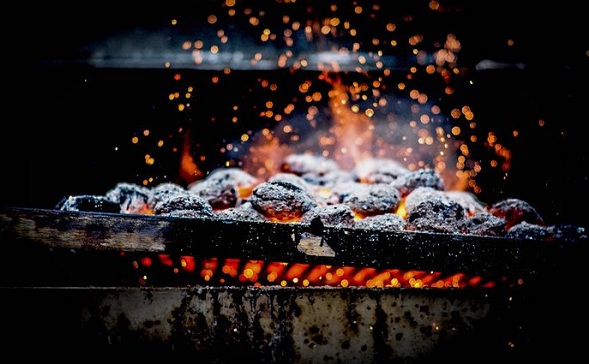Charcoal grilling is an art form that has been around for centuries. It is a way of cooking that requires patience, skill, and a deep understanding of how fire and food interact. Whether you’re a seasoned grilling pro or just starting, here are some tips and techniques to help you achieve a perfect BBQ experience with a charcoal grill.
Choosing the Right Charcoal
The first step to a successful BBQ grilling session is choosing the right charcoal. You can choose from either briquettes or lump charcoal. Briquettes are produced by compacting sawdust, whereas lump charcoal is crafted from hardwood.
Grilling aficionados often opt for lump charcoal since it produces less ash, burns at higher temperatures, and has a shorter burn time compared to briquettes. However, it can also be more expensive. On the other hand, briquettes are cheaper and burn more slowly, making them a good choice for longer cook times.
Prepping the Grill and Starting the Fire
Once you have your charcoal ready, it’s time to prep the grill. Begin by thoroughly cleansing the grill grates to eliminate any remnants from prior grilling endeavors. Next, oil the grates using a paper towel dipped in oil and tongs to prevent food from sticking.
It’s time to ignite the fire. While there are numerous ways to do this, the most commonly used technique involves using a chimney starter. Load the chimney starter with charcoal and position it on the grill grates. Light the newspaper at the chimney starter’s bottom with a lighter or matches. Wait until the charcoal is covered with white ash before pouring it onto the grill.
Controlling the Heat
Controlling the heat is key to successful grilling. You can control the heat by adjusting the airflow to the charcoal. Open the vents to increase the heat and close them to decrease the heat. You can also move the charcoal around to create different heat zones on the grill.
Direct vs. Indirect Grilling
Two primary grilling methods exist, namely direct grilling and indirect grilling. Direct grilling involves cooking food directly over charcoal, making it ideal for thinner cuts of meat like steaks and burgers that require swift cooking times.
Indirect grilling is when you cook the food next to, but not directly over, the charcoal. This is ideal for larger cuts of meat, such as roasts and whole chickens, that require longer cook times.
Using a Meat Thermometer
A meat thermometer is essential to achieving the perfect doneness for your meat. Different meats have different recommended internal temperatures, so check the temperature chart before grilling. Insert the thermometer into the meat and wait for the reading to stabilize.
Letting the Meat Rest
Once the meat is done, it’s important to let it rest before cutting it so that juices get redistributed throughout the meat, resulting in a more flavorful and tender dish. Cover the meat with foil and rest for 5-10 minutes before serving.
Cleaning the Grill
Cleaning the grill is just as important as prepping it. Once the grill has cooled down, use a wire brush to scrape off any leftover debris from the grates. Empty the ash catcher and dispose of the ashes properly. Finally, oil the grates again to prevent rust and keep them in good condition for your next grilling session.
In conclusion, BBQ grilling is a fun and rewarding experience that can bring friends and family together. By choosing the right charcoal, prepping the charcoal grill, starting the fire, controlling the heat, using direct and indirect grilling, using a meat thermometer, letting the meat rest, and cleaning the grill properly, you can achieve a perfect BBQ experience. You can discover your techniques and preferences for charcoal grilling with practice and experimentation. Happy grilling!


